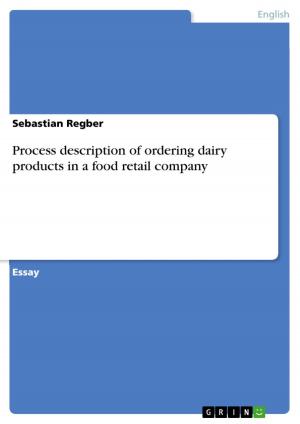Competitive forces BMW. An analysis of the effects
an analysis of the effects
Business & Finance, Marketing & Sales| Author: | Marion Maguire | ISBN: | 9783638353762 |
| Publisher: | GRIN Publishing | Publication: | March 1, 2005 |
| Imprint: | GRIN Publishing | Language: | English |
| Author: | Marion Maguire |
| ISBN: | 9783638353762 |
| Publisher: | GRIN Publishing |
| Publication: | March 1, 2005 |
| Imprint: | GRIN Publishing |
| Language: | English |
Research Paper (undergraduate) from the year 2004 in the subject Business economics - Marketing, Corporate Communication, CRM, Market Research, Social Media, grade: A-, Hawai'i Pacific University (HPU), course: Information Systems MBA class, 8 entries in the bibliography, language: English, abstract: This paper will analyze the five competitive forces in the automobile industry. More particularly, it will be analyzed how the forces have an effect on the car manufacturer BMW. Based on this analysis, the force with the most impact on the company will be identified. Based on that, it will be described how BMW uses Information Systems to offset the force. The five competitive forces model was developed in 1980 by Michael E. Porter. Porter's five forces model suggests that competition in an industry is rooted in its underlying economic structure and goes beyond the behavior of current competitors (Porter, 1980). The stage of competition depends upon five basic competitive forces, which determine the degree of competition and the profit potential in an industry. The five forces are intensity of competitors, power of suppliers, power of customers, threat of new entrants and threat of substitute products. BMW, which stands for Bayerische Motoren Werke, has made a well-known name as a luxury car manufacturer. The headquarter of the BMW group is in Munich, Germany, but the company is present all over the world. The company built a high brand equity over the years through continuous branding efforts and high quality products. BMW is arguably the most admired carmaker in the world and BMW products inspire near-fanatical loyalty (Kiley, 2004).
Research Paper (undergraduate) from the year 2004 in the subject Business economics - Marketing, Corporate Communication, CRM, Market Research, Social Media, grade: A-, Hawai'i Pacific University (HPU), course: Information Systems MBA class, 8 entries in the bibliography, language: English, abstract: This paper will analyze the five competitive forces in the automobile industry. More particularly, it will be analyzed how the forces have an effect on the car manufacturer BMW. Based on this analysis, the force with the most impact on the company will be identified. Based on that, it will be described how BMW uses Information Systems to offset the force. The five competitive forces model was developed in 1980 by Michael E. Porter. Porter's five forces model suggests that competition in an industry is rooted in its underlying economic structure and goes beyond the behavior of current competitors (Porter, 1980). The stage of competition depends upon five basic competitive forces, which determine the degree of competition and the profit potential in an industry. The five forces are intensity of competitors, power of suppliers, power of customers, threat of new entrants and threat of substitute products. BMW, which stands for Bayerische Motoren Werke, has made a well-known name as a luxury car manufacturer. The headquarter of the BMW group is in Munich, Germany, but the company is present all over the world. The company built a high brand equity over the years through continuous branding efforts and high quality products. BMW is arguably the most admired carmaker in the world and BMW products inspire near-fanatical loyalty (Kiley, 2004).















